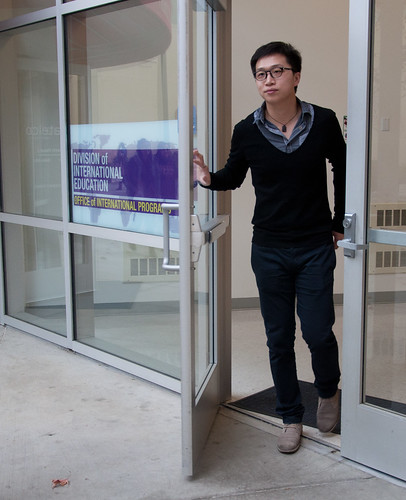An unstable economy and rising tuition has not deterred students overseas from obtaining a degree in the United States.

According to statistics from SF State’s Office of International Programs, Chinese students in particular have shown the highest rise in numbers coming to the U.S. with the number of enrolled international Chinese students at SF State rising from 315 in 2007 to more than 1,000 in the Fall 2011 semester.
Associate Vice President of International Education at SF State Yenbo Wu, who also studied in the US as an international graduate student 30 years ago, described the sudden influx of Chinese students as a trend that will only continue to grow. India and Japan used to be the top countries sending students to the United States, but due to China’s rapidly growing economy, they have pulled into the top spot.
“Their middle class is growing and now parents are able to afford to send their children overseas for an education,” Wu said. “What used to be un-dreamable and impossible is now doable.”
Wu said the Chinese highly value a good education and they see the United States as the best place to receive that.
“Getting a degree means something more when you get it from the U.S.,” Wu said.
Wu said the transition to the U.S. is not as bad as it was before, but since most come from middle to upper class homes they have to sacrifice a better standard of living and learn to do things on their own such as cooking, cleaning and supporting themselves financially.
“There’s not much of a culture shock compared to when I came here 30 years ago. What the students have to deal with now is heaven,” Wu said. “Kids know everything these days with the internet so it’s a little easier to adapt, but they have to learn fast.”
Asian American studies lecturer Jeannie Woo said international students have a hard time in the classroom. There are services for international students such as the American Language Institute and English as a Second Language programs that provide assistance for those having difficulty learning the language or doing the class work, but after passing the Test of English as a Foreign Language exam, most students feel they don’t need the extra help.
“It’s mainly a language barrier and a different mindset that make it difficult for international students,” Woo said. “They have the writing skills and the reading ability, but they’re just not as proficient as the local students. Plus they have a different mindset they were brought up to learn a different way.”
Chairwoman of SF State’s Asian American Studies department Lorraine Dong said Chinese students not only have difficulty in the classroom, but they have a hard time with society as well. Most students come here expecting to get an American experience like the ones that get made from Hollywood.
“The students have this perception of what an American lifestyle is,” Dong said. “Since most students come from well-off homes, they don’t realize how most of their counterparts live in the States as minorities and as a part of the working class so this creates a rift between the international and local students.”
International Chinese student and SF State marketing major James Zheng said learning the language and culture was difficult, but once he overcame the struggles everything got a lot better for him. Last year he and a friend launched the SFSU Student Hub a website where SF State students can search an online bulletin board for everything from students asking for tutors to looking for housing.
“I hope other international students take advantage of their opportunities when they come here,” Zheng said. “It’s a once-in-a-lifetime experience so you have to enjoy it, but first you have to help yourself and not sit around. Go out and get a hobby and don’t be shy.”
Wu said he expects the number of international students to be on the rise for years to come, however the U.S. should keep doing its best to attract the brightest minds before they are drawn to other countries.
“International education is important for the world,” Wu said. “Studying overseas allows us to make the people to people interaction, which in turn will deliver a better understanding of everyone’s situations so we can ultimately achieve the main goal of world peace.”



